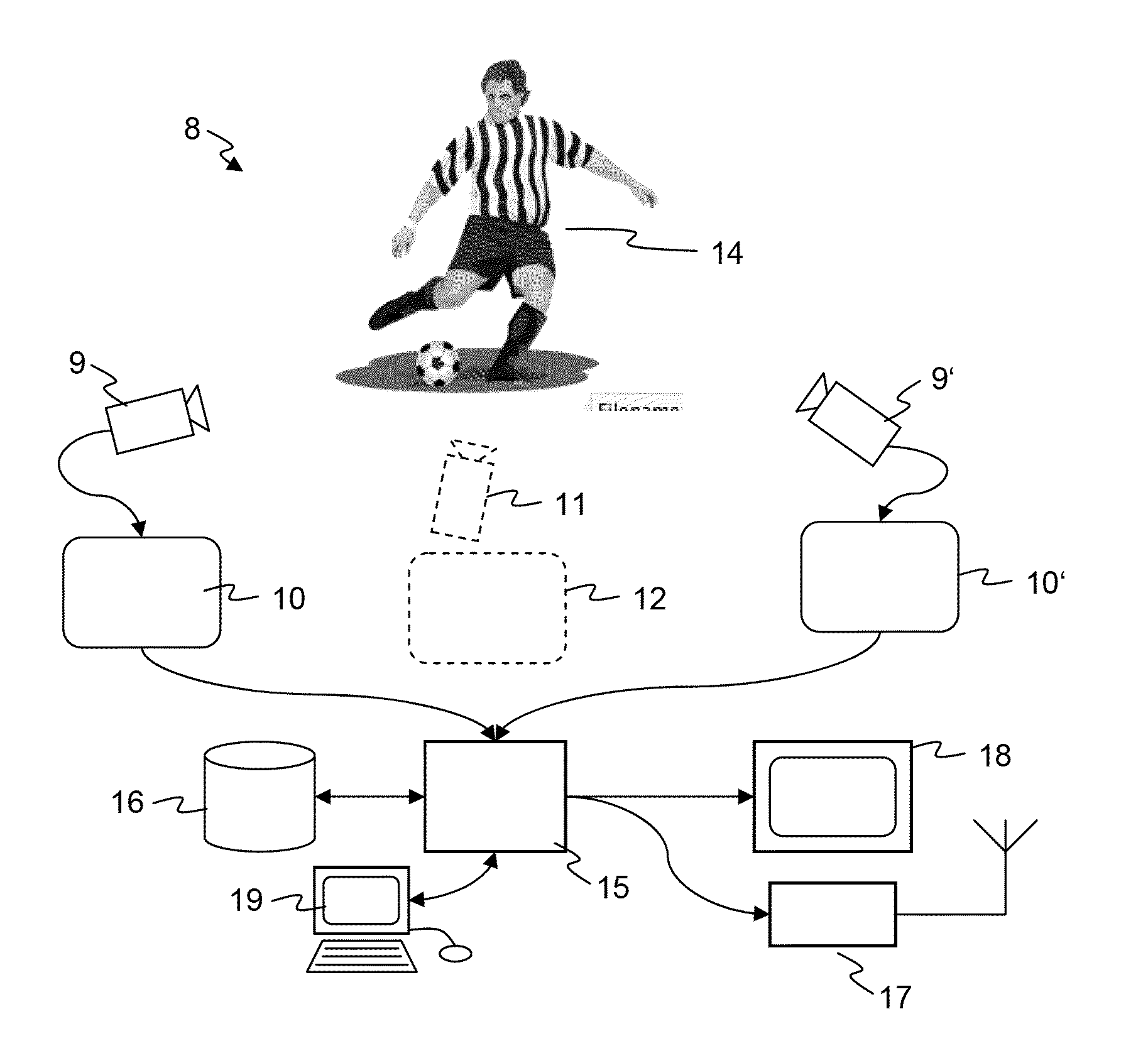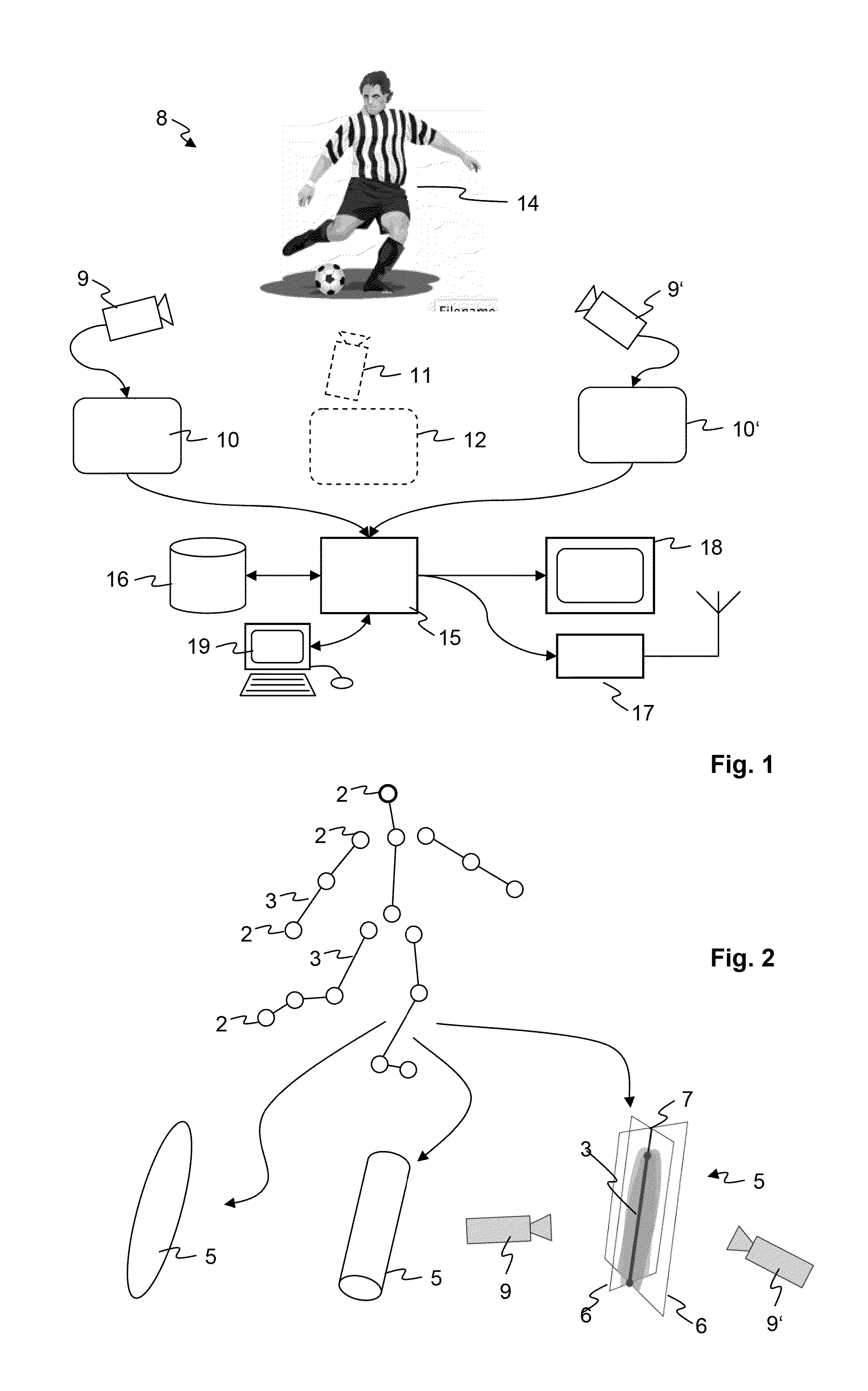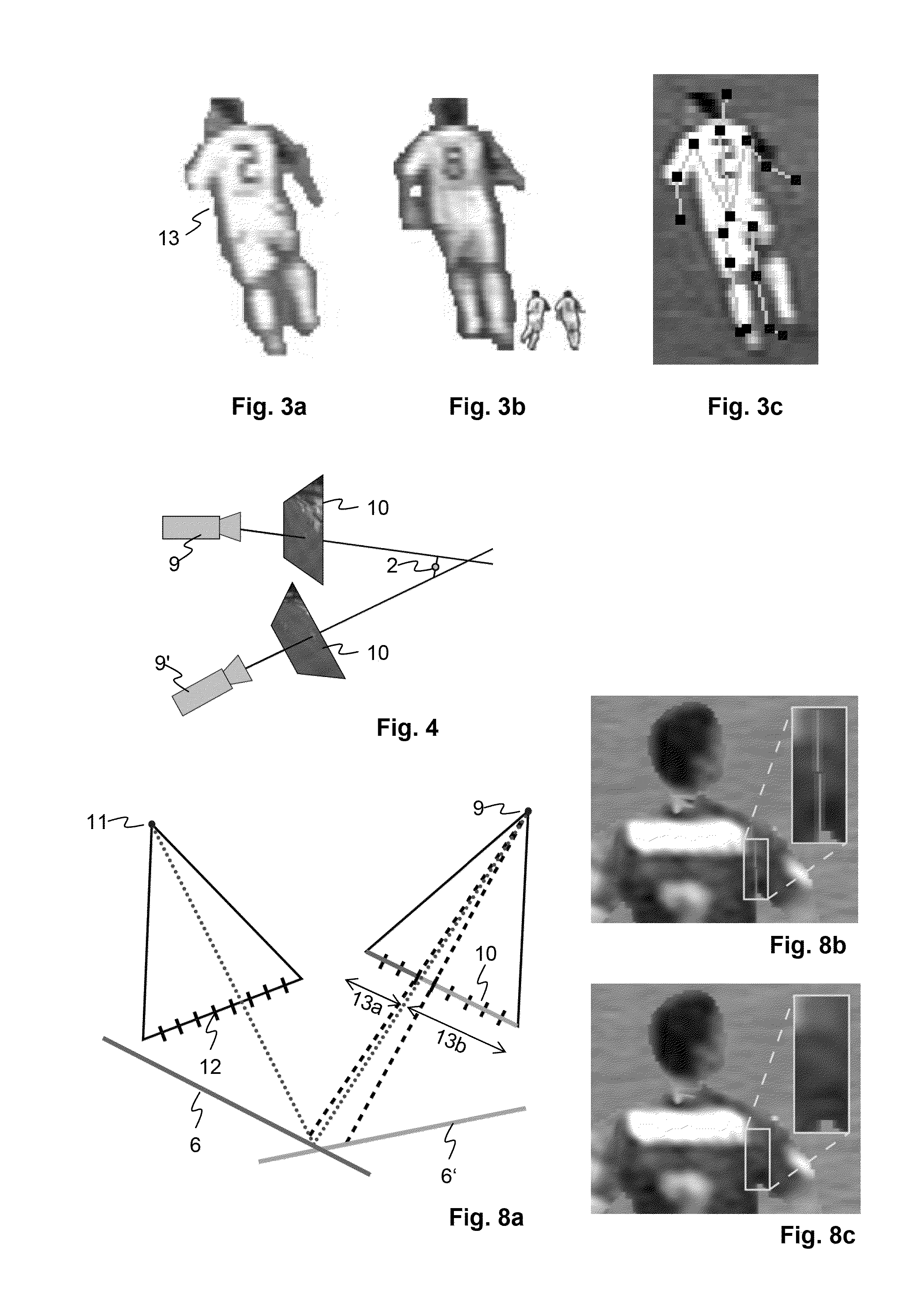Method for estimating a pose of an articulated object model
a technology of articulated objects and models, applied in image data processing, instruments, computer peripheral equipment, etc., can solve problems such as poor texture quality and resolution, inaccurate camera calibration, and even more severe problems when processing video sequences instead of still images, so as to reduce setup restrictions and reduce ghosting artifacts , the effect of eliminating visible discontinuities
- Summary
- Abstract
- Description
- Claims
- Application Information
AI Technical Summary
Benefits of technology
Problems solved by technology
Method used
Image
Examples
Embodiment Construction
[0140]FIG. 1 schematically shows an overview over a real world scene 8, the scene 8 comprising a real world object 14 such as a human, being observed by two or more source cameras 9, 9′, each of which generates a video stream of source images 10, 10′. The system and method according to the invention generates a virtual image 12 showing the scene 8 from a viewpoint of a virtual camera 11 which is distinct from the viewpoints of the source cameras 9, 9′. Optionally, from a sequence of virtual images 12 a virtual video stream is generated. An apparatus according to the invention comprises a processing unit 15 which performs the image processing computations implementing the inventive method, given the source images 10, 10′ and generating one or more virtual images 12. The processing unit 15 is configured to interact with a storage unit 16 for storing source images 10, virtual images 12 and intermediate results. The processing unit 15 is controlled by means of a workstation 19 typically...
PUM
 Login to View More
Login to View More Abstract
Description
Claims
Application Information
 Login to View More
Login to View More - R&D
- Intellectual Property
- Life Sciences
- Materials
- Tech Scout
- Unparalleled Data Quality
- Higher Quality Content
- 60% Fewer Hallucinations
Browse by: Latest US Patents, China's latest patents, Technical Efficacy Thesaurus, Application Domain, Technology Topic, Popular Technical Reports.
© 2025 PatSnap. All rights reserved.Legal|Privacy policy|Modern Slavery Act Transparency Statement|Sitemap|About US| Contact US: help@patsnap.com



